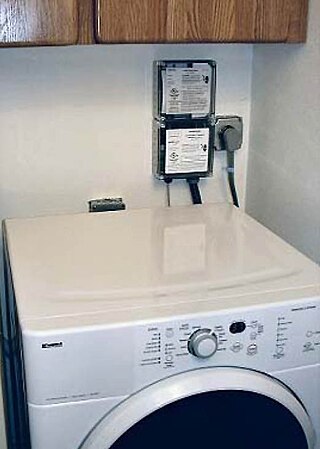Ratemaking goals
Ratemaking has an economic dimension because it attempts to set prices at efficient (nonmonopolistic, competitive) levels. Ratemaking is political because the product is determined to be a social necessity and rates must be fair across different classes of consumers. Additionally, ratemaking can be designated to serve other social purposes. Although it can be said that all regulation is a combination of politics and economics, ratemaking is frequently more technical. Ratemaking has five functions: [2]
- Capital attraction;
- Reasonable energy pricing;
- Incentive to be efficient;
- Demand control or consumer rationing; and
- Income transfer.
These regulatory goals can conflict. [3] When prices are kept below market, efficiency suffers. When prices exceed the market, prices may not be reasonable. Both events have occurred during the history of utility regulation. The above goals attempt to serve the interests of the utility, its shareholders, consumers, and the general public. To be constitutional, a rate cannot be so high as to be confiscatory. Most state statutes further require rates to be just, reasonable, and non-discriminatory. [4]
Capital attraction
Although utilities are regulated industries, they are typically privately owned and must therefore attract private capital. Accordingly, because of constitutional takings law, government regulators must assure private companies that a fair revenue is available in order to continue to attract investors and borrow money. This creates competing aims of capital attraction and fair prices for customers. Utility companies are therefore allowed to charge "reasonable rates," which are generally regarded as rates that allow utilities to encourage people to invest in utility stocks and bonds at the same rate of return they would in comparable non-regulated industries. [4]
Reasonable energy pricing
State laws typically restrict utilities from large, sudden rate increases. Utilities should implement new rates over time so that consumers and business can adapt to the changing prices. This is known as the principle of gradualism. [5]
Demand control or consumer rationing

The price of a utility's products and services will affect its consumption. As with most demand curves, a price increase decreases demand. Through a concept known as rate design or rate structure, regulators set the prices (known as "rates" in the case of utilities) and thereby affect the consumption. With declining block rates, the per-unit price of utility consumption decreases as the energy consumption increases. Typically a declining block rate is offered only to very large consumers. If conservation is the goal, regulators can promote conservation by letting prices rise. A third possible rate design is a flat rate which charges the same price for all consumption. [4]
Income transfer
Ratemaking distributes wealth from consumers to utility owners. Ratemaking also involves redistribution of wealth among and within classes of customers. Utility customers are generally grouped in three categories – residential, industrial, and commercial. Each group is sometimes further subdivided. [4]
Executive compensation
The compensation received by the executive in utility companies often receives the most scrutiny in the review of operating expenses. Just as regulated utilities and their governing bodies struggle to maintain a balance between keeping consumer costs reasonable and being profitable enough to attract investors, they must also compete with private companies for talented executives and then be able to retain those executives. [6]
Constraints from regulation have been shown to affect the level of compensation received by executives in electric utilities. Executive compensation usually consists of four parts: [7]
- Base salary
- Short term incentive pay (STIP)
- Long-term incentive pay (LTIP); and
- Benefits such as retirement and health care
Regulated companies are less likely to use incentive-based compensation in addition to base salaries. Executives in regulated electric utilities are less likely to be paid for their performance in bonuses or stock options. [6]
Electric utility ratemaking for executives
Executives in regulated electric utilities also have less managerial control than those in unregulated or private industries. These executives are in charge of large numbers of workers as well as the company's physical and financial assets. Limiting their control has been shown to reduce investment opportunities. The same constraints are placed on the board of directors for the utility by the monitoring or oversight of the utility commission and they are less likely to approve compensation policies that include incentive-based pay. [6] The compensation for electric utility executives will be the lowest in regulated utilities that have an unfavorable regulatory environment. These companies have more political constraints than those in a favorable regulatory environment and are less likely to have a positive response to requests for rate increases. [8]
Just as increased constraints from regulation drive compensation down for executives in electric utilities, deregulation has been shown to increase compensation. The need to encourage risk-taking behavior in seeking new investment opportunities while keeping costs under control requires deregulated companies to offer performance-based incentives to their executives. It has been found that increased compensation is also more likely to attract executives experienced in working in competitive environments. [9]
The Energy Act of 1992 in the United States removed previous barriers to wholesale competition in the electric utility industry. Currently twenty-four states allow for deregulated electric utilities: Ohio, Oklahoma, Oregon, Pennsylvania, Rhode Island, Texas, Virginia, Arizona, Arkansas, California, Connecticut, Delaware, Illinois, Maine, Maryland, Massachusetts, Michigan, Montana, New Hampshire, New Jersey, New Mexico, New York, and Washington D.C. [10] As electric utility monopolies have been increasingly broken up into deregulated businesses, executive compensation has risen; particularly incentive compensation. [11]



